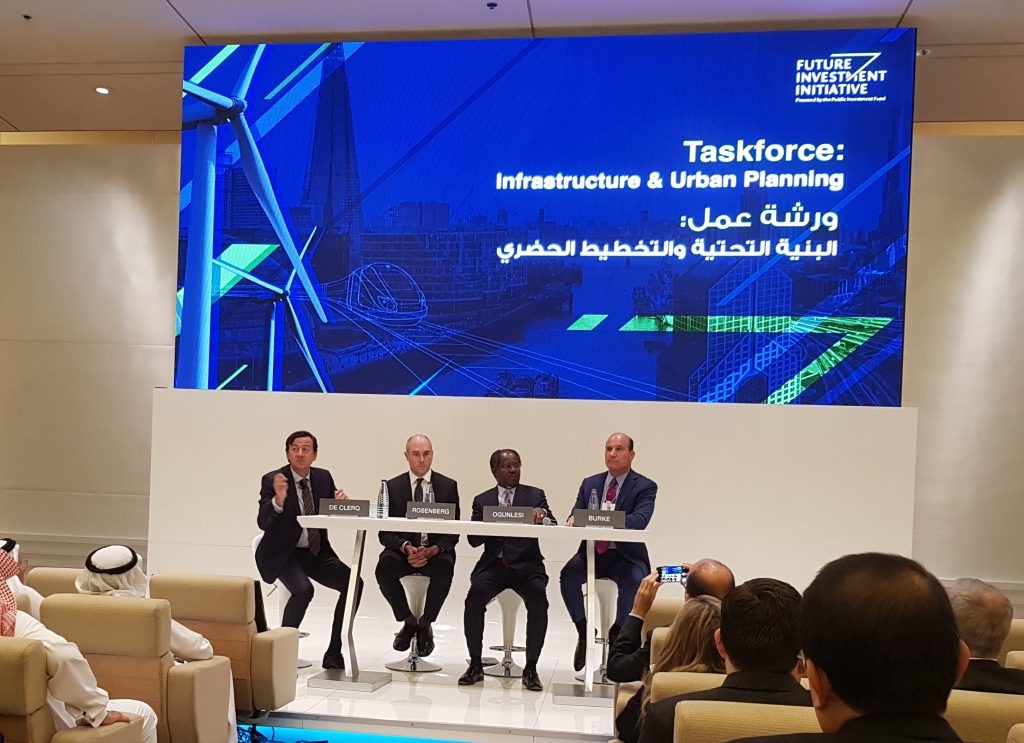Funding the infrastructure of the future
With technological change and growing urbanization, there is an urgent need for more and better infrastructure: innovation and alternative funding methods such as public-private financing (P3) must be the way forward.
Our cities are on the front lines of change. They are taking leadership roles in pioneering new ways to pay for and provision infrastructure that will help them prepare for the unprecedented urban migration ahead and make them fit for the future. The hurdles are formidable and will take trillions of dollars globally to address – as much as $71 trillion by 2050, according to the Organization of Economic Cooperation and Development. With hundreds of billions of dollars available in investment funds, the private sector can and will continue to play a key role in supporting these efforts.
Our changing world
While infrastructure and its funding are at the heart of discussions about how we progress, every city and community is experiencing its own set of challenges and is developing tailored solutions on that journey.
In affluent cities such as London, metropolitan leaders are looking to 2065 and creating a city region with enhanced sustainability, closer connections to suburbs and improved mobility. The city is spending tens of billions of dollars on new rail, highway and airport expansions to support this ambition. In the U.S., Los Angeles city leaders are also focused on improving mobility, and they hope to extend growth, housing and jobs by revitalizing nearly 11 miles of the Los Angeles River – what today is effectively a concrete storm-water runoff channel. It’s anticipated that these efforts will be financed by direct government funding, taxpayer approved bond initiatives, P3s and private investment.
In less affluent parts of the world, however, the route is more challenging – and funding sources less clear. China, of course, is underwriting much of the “One Belt, One Road” initiative, a program of interlinking trade deals and infrastructure which spans more than 60 countries. Designed to transform global trade through extensive highway, rail and shipping lanes, it is one of the largest infrastructure projects underway in the world with the potential to benefit many areas from Europe to Central Asia where investments are being made.
Meanwhile, in many urban areas of Southeast Asia, India, and Africa, addressing basic services such as food, water, communications and power and are the top priorities. In India, where Prime Minister Narendra Modi is transforming 100 cities into sustainable, urban centers through his Smart Cities Mission, he’s inviting foreign investment and private sector partners, including AECOM, to help.
Innovation and quality of life
We know our old approaches are not delivering the infrastructure we want and need, so we must embrace the new. For example, perhaps drones could improve fresh food delivery and help prevent waste in countries dealing with hunger and malnutrition. With autonomous vehicles, even a Hyperloop, will we need fewer highways and parking spaces?
There’s no question that innovation is improving the delivery of better infrastructure, and alternative funding approaches are taking shape in many parts of the world. But this progress is largely fragmented. There’s a pressing need to bring together engineers, architects, builders, urban planners, specialists, and others to align experience and help cities think more broadly and deliver design efficiency.
Three key steps to a vision
Any journey is helped by having an eye on the destination – and when it comes to our cities this means a vision. When embarking on major urban design and infrastructure projects there are three key questions to ask:
- What problems are we trying to solve?
- What are the economic drivers?
- How do we invest in infrastructure in a smart way so the city can achieve short-term success and build long-term value?
Realizing the Saudi vision
As an example, the Kingdom of Saudi Arabia has a strong vision for the future. It is expressed in Saudi Vision 2030. Its goals are to help the country diversify its economy, create jobs and fulfil a desire to elevate and transform its current and future cities into global destinations and places of opportunity.
This month [October, 2017], at the Future Investment Initiative conference in Riyadh, Crown Prince Mohammed Bin Salman announced plans for the creation of a new city, NEOM – an independent special zone stretching over three countries near the Red Sea.
Different from traditional city-making that relies on amenities that attract people first and then economic growth, NEOM pursues an alternate strategy: to get industry and the critical companies first, which then bring in the highly specialized staff, who then attract like-minded peers, and, finally, place-making then develops organically from there. NEOM envisions leveraging the power of the sun, ample land and robotics to help seed a manufacturing industry complete with its own integrated supply system. This industry would be a place for new jobs and training opportunities for Saudis to help them transition into the private sector, as well as the bedrock for a city that can scale up its infrastructure with growth.
Drawing on decades of experience building new cities, AECOM understands the value that well-designed, self-contained and transit-oriented developments can deliver in quickly supporting urban migration demands. There is no doubting the importance of integrated planning in meeting the needs of developments like NEOM at various stages, from engaging stakeholders, to design and construction, and finally, making the entire project more resilient within a short timeframe.
The infrastructure ROI
Change is coming, fast. And with it comes a requirement for all of us to work together to solve critical needs for our cities, while at the same time, advancing the estimated 1.6x growth multipliers that infrastructure investment delivers – in productivity gains, new jobs and other benefits.

*On Oct. 26, 2017, AECOM Chairman and CEO Michael S Burke participated in a panel discussion at the Future Investment Initiative conference in Riyadh, Saudi Arabia.






